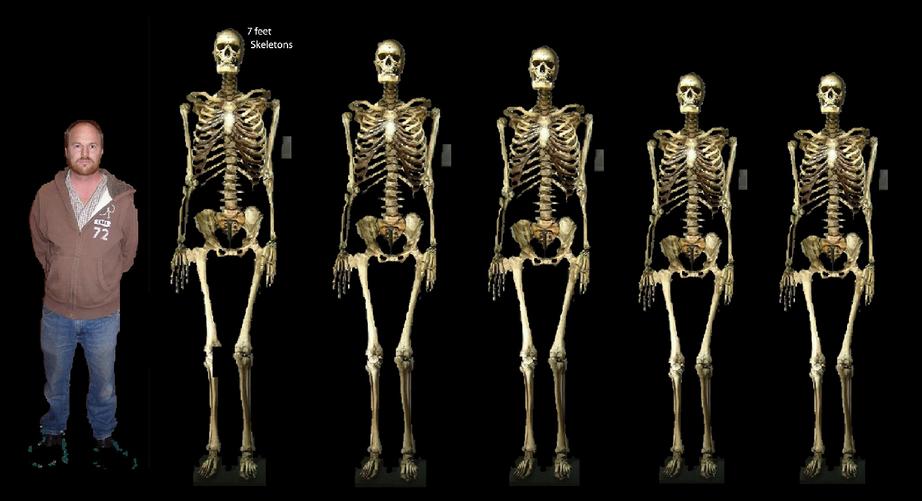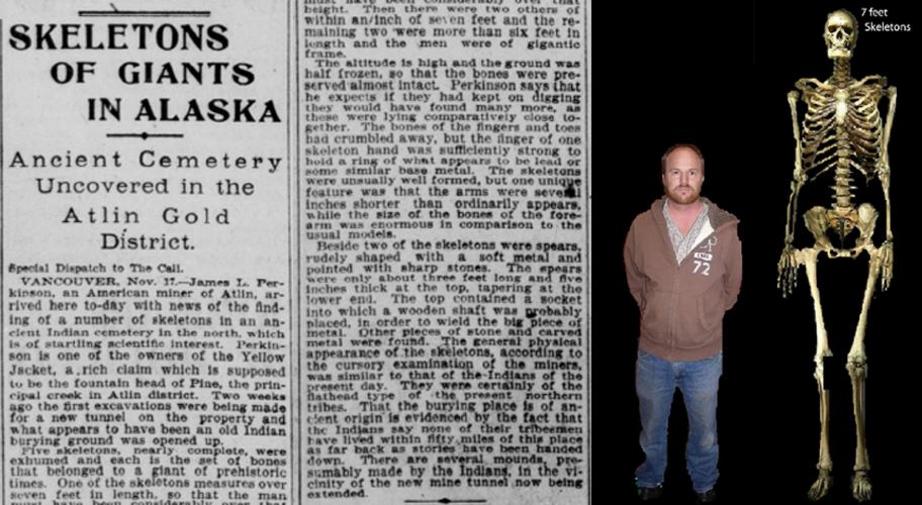Ancient giants found buried in Alaska
Ivan T. Sanderson, a famous US zoologist, once shared with the public a curious story about a letter he received from Alan Makshir, an engineer who was stationed on the Aleutian island of Shemya during World War II.
While building an airstrip, his crew bulldozed a group of hills and discovered under several sedimentary layers what appeared to be human remains. The Alaskan mound was in fact a graveyard of gigantic human remains, consisting of crania and long leg bones.
The crania measured from 22 to 24 inches from base to crown (58 cm), and the width was 11 inches (30 cm). Since an adult skull normally measures about eight inches from back to front, such a large crania would imply an immense size for a normally proportioned human.

Ancient Giant Cemetery Uncovered in the Atlin Gold District in Alaska. via Greater ancestors
The ancient giants had a double row of teeth and disproportionately flat heads.

Giant skulls with elongated shape found in Alaska.
Furthermore, every skull was said to have been neatly trepanned (a process of cutting a hole in the upper portion of the skull). The habit of flattening the skull of an infant and forcing it to grow in an elongated shape was a practice used by ancient Peruvians, the Mayas, and the Flathead Indians of Montana.

Newspaper article about the discovery of giants in Alaska
Sanderson tried to gather further proof, eventually receiving a letter from another member of the unit who confirmed the report. The letters both indicated that the Smithsonian Institution had collected the remains, yet nothing else was heard.

There were giants in the earth in those days, and afterwards
Sanderson seemed convinced that the Smithsonian Institution had received the bizarre relics, but wondered why they would not release the data. He asked: “… is it that these people cannot face rewriting all the textbooks?”
If you want to learn much more about Giants, you should watch: True Legends – Episode 3: Holocaust of Giants by Steve Quayle
